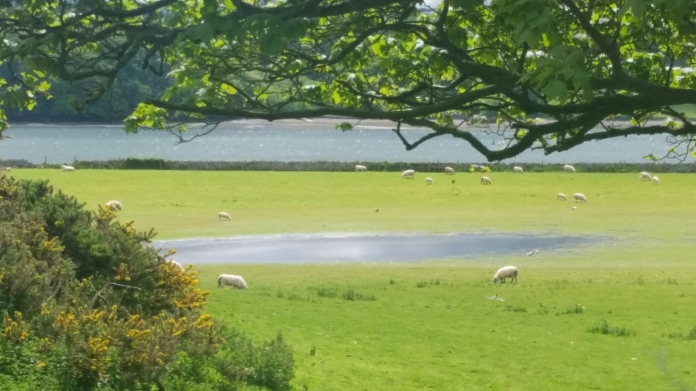Robert Wood, who was Dawkins’ partner in visiting and recording the antiquities of Palmyra, was a bit older, the son of an Irish Presbyterian minister, educated at Glasgow University and later registering at Padua, after a period as a travelling tutor. He first visited Syria and Egypt in the early 1740s. He met Dawkins in Rome whilst working as private secretary to the Earl of Milltown. Their travels in the eastern Mediterranean were a serious research trip. They equipped their boat with a library of ‘all the Greek historians and poets, some books of antiquities, and the best voyage writers’, took with them tools for digging and, following the model of Desgodets’ measurements of buildings in Rome, undertook detailed drawings of classical remains, together with maps and reconstructions. Not only was Wood author of The Ruins of Palmyra and The Ruins of Baalbec, but he also published an Essay on the Original Genius of the Writings of Homer, first written as a letter to Dawkins in 1755 although not published for twenty years.
Monthly Archives: May 2015
James Dawkins
In reading about the ghastly massacres and destruction of the museum and statuary in Palmyra, I have been finding out more about James Dawkins, who undertook some of the research and helped finance Robert Wood’s The Ruins of Palmyra, otherwise Tedmor in the Desart, which brought Palmyra to the attention of eighteenth-century students of the antique. Dawkins came from Jamaica and, after Abingdon School and St. Johns College, Oxford and on succeeding to his family estates, he set off to travel in Italy in 1742. He set out from England again in 1749, met Robert Wood in Naples and chartered the Matilda to travel round the Mediterranean with G.B. Borra, the Turin architect, as draughtsman. They arrived in Palmyra on 14 March 1751 and spent five days (fifteen days according to their book) measuring and drawing plans of the temples and recording inscriptions. The Ruins of Palmyra was published two years later when Dawkins was visiting Berlin in an attempt to get Prussian support for a Jacobite rebellion. It was a key text in the revival of the antique, influencing Robert Adam in his designs for Osterley, Syon, Bowood and Compton Verney and William Chambers who reproduced The Temple of Venus at Kew. All that they recorded so meticulously is now in the process of being destroyed.
My morning walk
When I’m in Anglesey, I like to go for an early morning walk to buy the newspaper. It gives me a chance to see the sun on the fields:-
To walk down to the estuary of the Afon Braint:-
Anglesey Coastal Path
I took the day off yesterday to walk the southern stretch of the Anglesey Coastal Path, a stretch from Moel-y-don, down by the Straits of Anglesey, heading westwards, partly along the sea shore, otherwise across fields to the south of the Regency houses which took advantage of the views across to Snowdon. It was a transcendent green:-
The Goring Hotel
I went for dinner for the first time in my life in The Goring Hotel, a whole new experience of the country in London, stuffed full of wedding parties (or maybe it was the Garden Party) and with the opportunity to play croquet on the lawn, odd in its location just near Victoria:-
Fordcombe (2)
I have been puzzling over the group of farm buildings on the road north of Fordcombe as to why I could not find out more about them because it’s a group of such obvious architectural quality (as Marie Willey says, like a photograph from Edwin Smith). The answer is that it is the home farm for Anthony Salvin’s demolished South Park in the parish of Penshurst, not Fordcombe, described by John Newman (rightly) as ‘a wonderfully romantic group by Devey’. It’s romanticism is part original, with a group of seventeenth-century farm buildings, and part self conscious as the work of George Devey, who was trained as a painter by Cotman, marked the beginnings of the vernacular revival.
Farshid Moussavi RA Elect
Realising that I had not seen much work by Farshid Moussavi, a recently elected RA, I called in at the shop she has designed for Victoria Beckham in Dover Street. The doorman looked rightly suspicious as he rolled back the door for me, but it has an intriguing use of a grand sculptural staircase stretching up to the first floor and down to the basement, like the one that Koolhaas did for Prada in New York, together with an angular cross geometry which is extended into the seating. The crossover between fashion and art gallery moves one step closer, not least with a Damien Hirst displayed alongside the clothes.
Conrad Shawcross RA
I walked out into the courtyard of the RA at lunch-time and witnessed the full glory of its invasion by metallic triffids designed and installed by Conrad Shawcross. It’s the prelude to this year’s Summer Exhibition:-
Fordcombe (1)
Just north of Fordcombe on the road to Penshurst there is an old sign advertising the sale of eggs and herbs. One turns off into a farmyard which is magnificently bucolic, disordered in a way which is now rare. We didn’t buy any herbs, but I did take the liberty of photographing it:-












You must be logged in to post a comment.